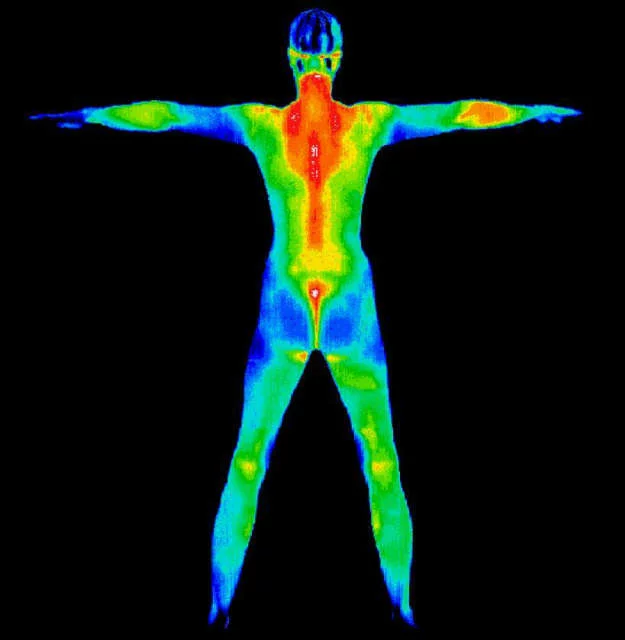Thermography (also called Digital Infrared Thermal Imaging – DITI) is a unique diagnostic tool that can detect and visualize the heat produced by various parts of the body.
It is particularly effective in identifying areas of inflammation, a key indicator of many health conditions and diseases.
Thermography’s non-invasive nature allows for the early detection of diseases without the need for radiation or any physical discomfort, making it an invaluable tool in preventive health care and the management of chronic conditions.
Unlike methods that require physical contact or insertion of devices, thermography is performed without any contact, making it comfortable for patients.
As there is no compression, thermography can be especially helpful for women with breast implants.
Thermography can help with identifying areas of inflammation in the body, which can be indicative of various health conditions, including arthritis, fibromyalgia, and other inflammatory disorders.
Thermography can detect abnormalities in blood flow and is useful in diagnosing conditions such as varicose veins, deep vein thrombosis (DVT), and other circulatory problems.
Useful in diagnosing and monitoring conditions affecting the muscles, bones, and joints, such as rheumatoid arthritis, neck and back pain, and injuries.
It can help identify nerve damage and inflammation, assisting in the diagnosis and management of conditions such as neuropathy, carpal tunnel syndrome, and other nerve-related issues.
Thermography is used to detect and evaluate issues related to dental health and temporomandibular joint disorders, including inflammation and nerve problems.
While not a replacement for traditional diagnostic methods, thermography can be used as a supplementary tool in screening for skin cancer by detecting irregularities in skin temperature.
It can assist in identifying issues related to the digestive system, such as irritable bowel syndrome (IBS) and other conditions that may cause inflammation or changes in blood flow.
Thermography can be used to assess the effectiveness of treatments by monitoring changes in inflammation and blood flow, providing valuable feedback for healthcare providers.
By detecting early signs of disease and areas of concern before they develop into more serious conditions, thermography serves as a powerful tool in preventive health care strategies.

Thermography integrates seamlessly with holistic health practices such as homeopathy, naturopathy, osteopathy, and Ayurveda by providing a detailed picture of the body’s thermal anomalies, which may indicate areas of imbalance or disease.
This information can guide holistic practitioners in creating personalized treatment plans that address the symptoms and the root cause of a patient’s health issues.
For instance, areas of high inflammation detected by thermography can be targeted with specific homeopathic remedies or Ayurvedic treatments that promote healing and balance within the body.
This integrated approach ensures that treatment is tailored to the individual’s unique health profile, enhancing the efficacy of holistic interventions.